Have you ever wondered how to understand number similarities in math and music? Keep reading to discover how math and music are related.
How to Understand Number Similarities Used in Math and Music
#1 Types of Real Numbers
Before looking at the similarities between math and music, it is important to recognize that there are different types of numbers. For example, when you were a young child, you were introduced to counting numbers, such as 1, 2, 3 … Next, you discovered zero. Over time you learned about other types of numbers.
A Fun Fact! So you may wonder why the term, “real” is used when describing numbers. Did you know that there are numbers categorized as “Imaginary Numbers”? This is true! No worries. Imaginary numbers will not be discussed in this post.
Below are examples and descriptions of real numbers.

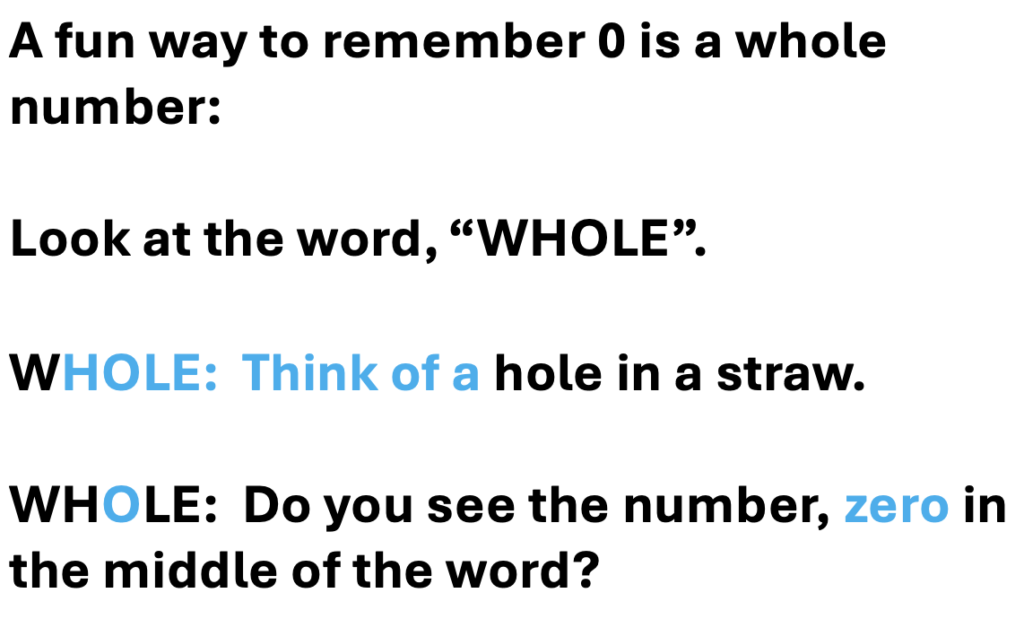
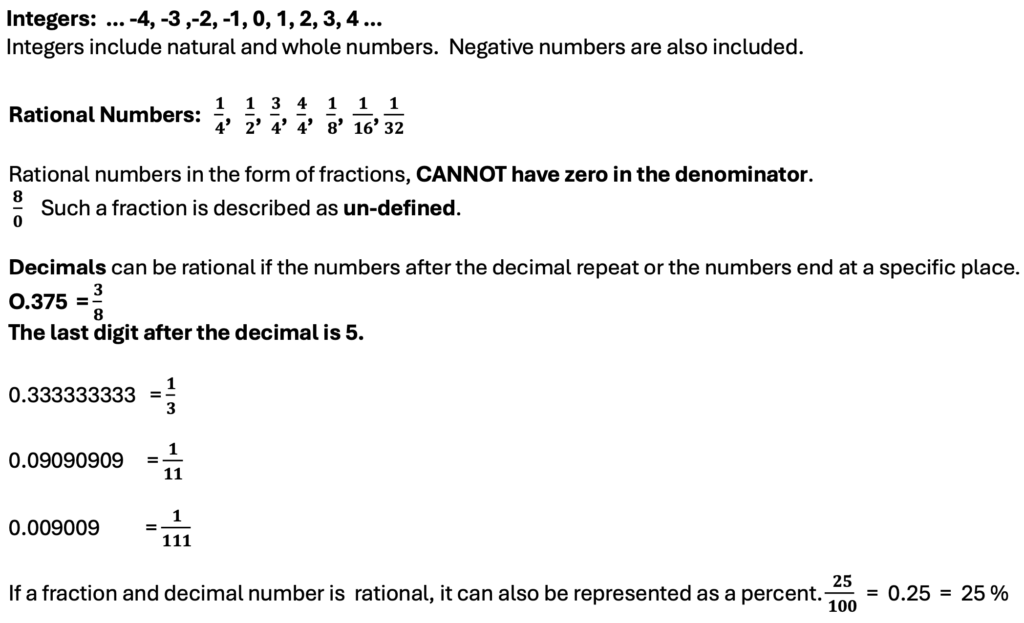
#2 – Natural Numbers Used in Music
When students begin to learn how to count note values in music, natural numbers are used. See the examples below.

If you are not familiar with music notes, this description might be a bit baffling. No problem. Below are illustrations you will find helpful.


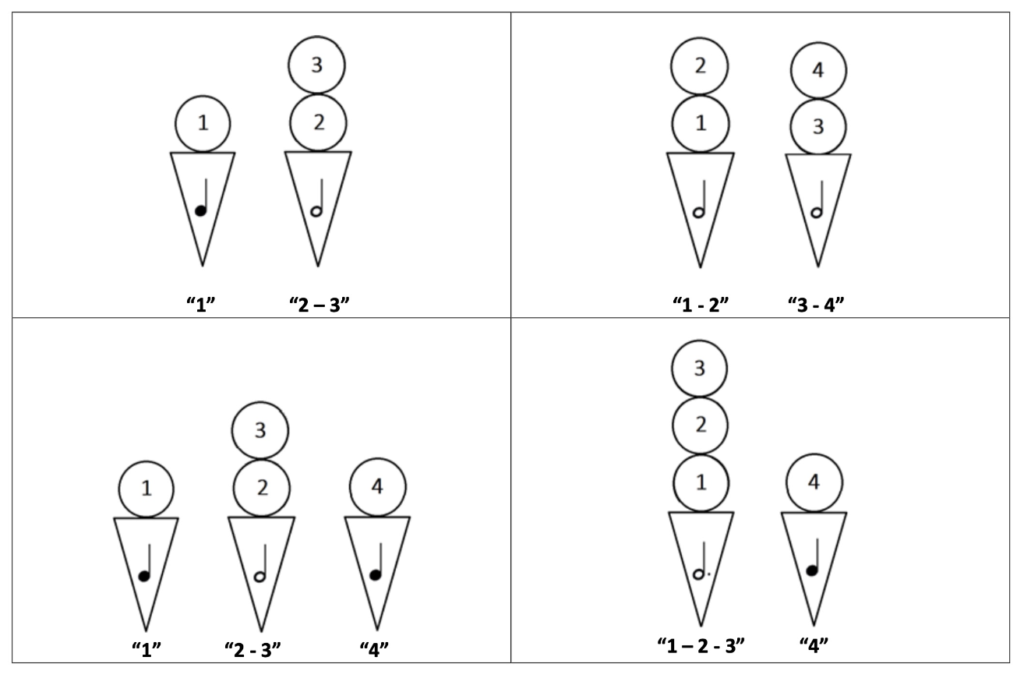

#3 Rational Numbers Used in Music
When explaining note values to students, I share the value of a quarter, the number of quarters in fifty cents, seventy-five cents, and a dollar. Next, I explain how the quarter can be compared to the quarter note. Once my students can play and count music using natural numbers, we venture into the great world of rational numbers!
In the descriptions below you will discover the following:
1. The first column will include the note name and its value.
2. In the second column, the coin name and its value will be provided.
3. By far, my favorite sections are the next three columns which describe the fraction, decimal and percent which each represent rational numbers.
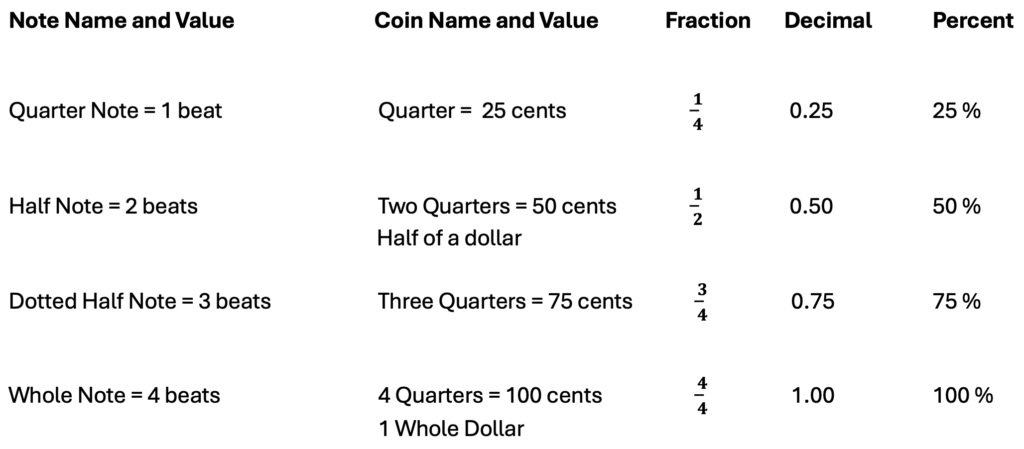
Whether you are a math or music person, you will discover the beautiful connections between notes and quarters. Sit back, and take it all in. Observe the patterns going down each column. Also, observe the patterns from left to right in each row. In doing so, you will discover fascinating relationships between music and math!
Observe ratios found between note values and quarter notes.

Once again we observe the beauty of the math and music relationship
#4 – Part and Whole in Math and Music
Part and whole is another concept that illustrates the similarities observed in math and music. This concept also has ties to rational numbers, fractions in particular.
For example, a teacher may show children a whole apple. Next, the apple is cut in half. The teacher continues and explains two of the halves when put back together once again make a whole. This is a way young children may be introduced to rational numbers.
This concept is also represented when introducing eighth and sixteenth notes. For example, a circle with a quarter note inside symbolically represents a whole vs. part. Next, imagine that the quarter note is cut in two equal parts to make two eighth notes. Following, the quarter note is cut into four equal parts. This makes four sixteenth notes. These concepts may be observed in the illustration below.
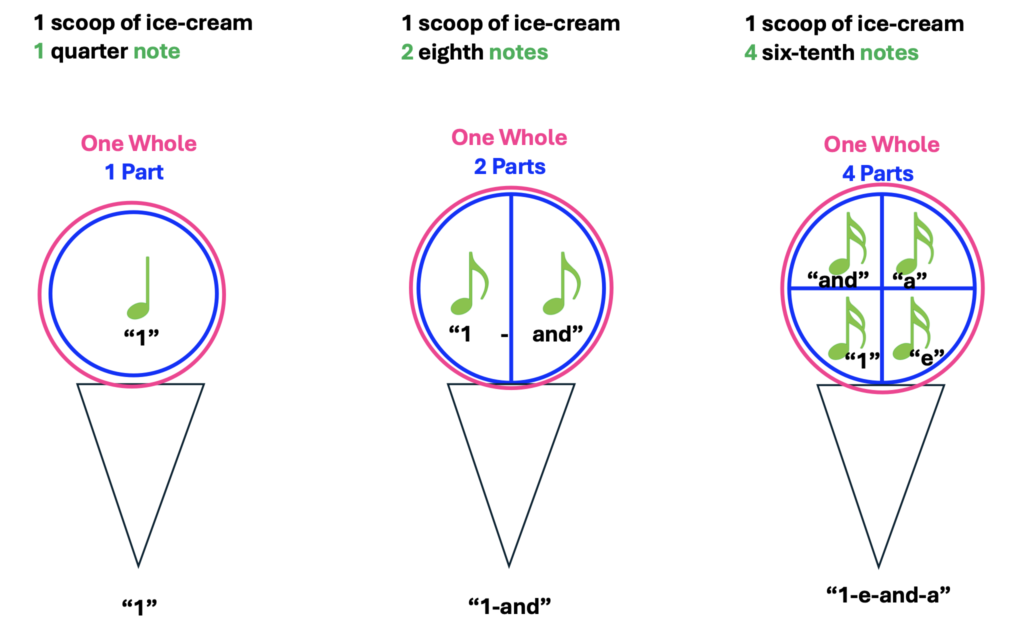
Each of the parts also include a method for counting these note values.
In the next illustration, you will observe fraction addition. Notice that when parts are added together, it makes one whole.
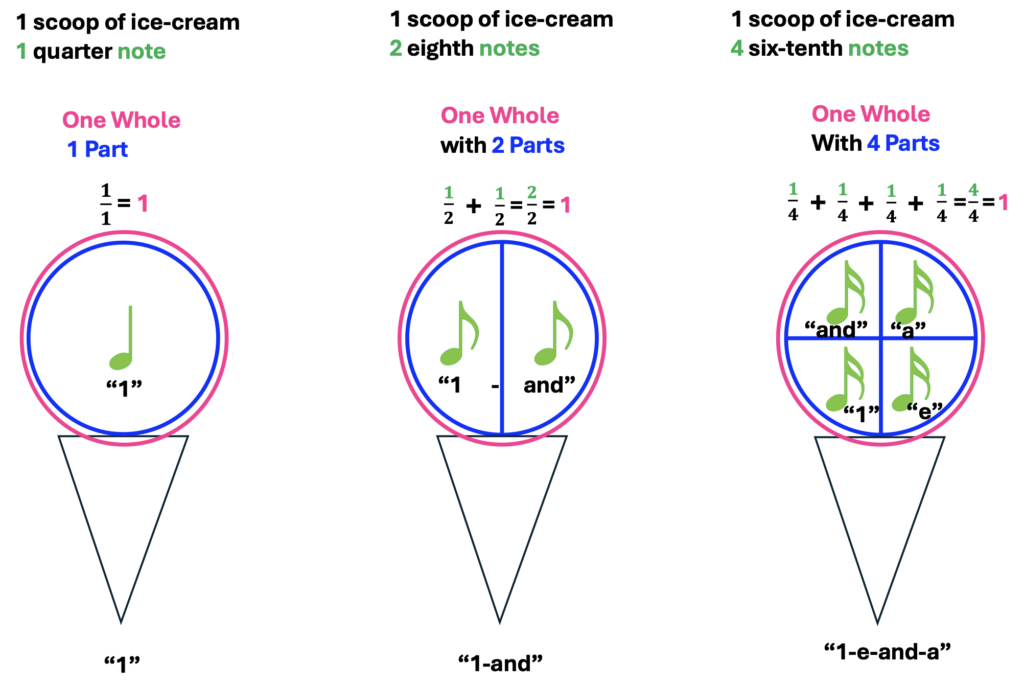
Now that you have been able to visualize how the math works, let’s further explore how to count music. See the next description and illustration.
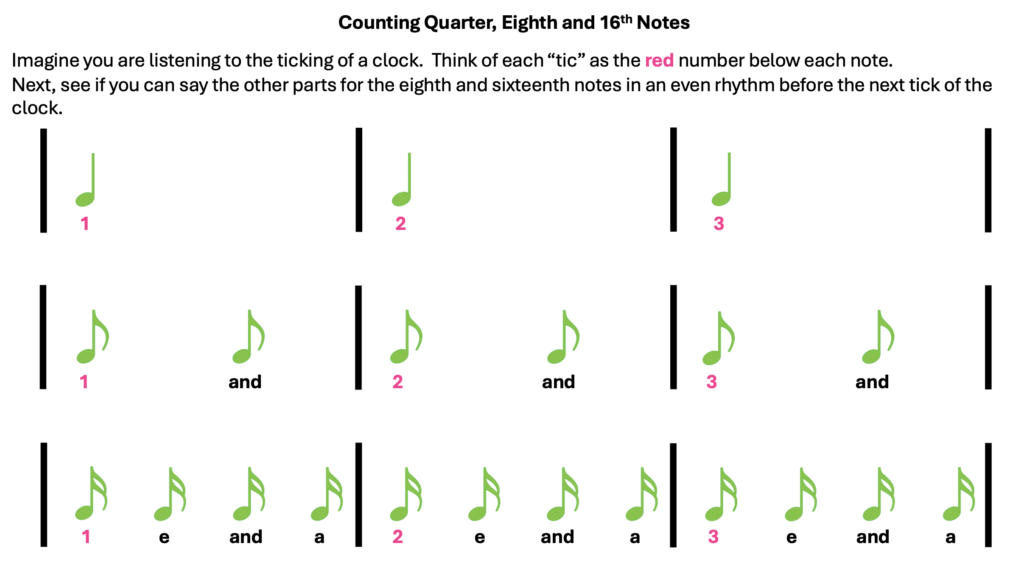
Conclusion
.
As we have observed cross-connections between math and music, I hope you have discovered the beauty of these numbers. May these observations also be shared with students. May they see beauty of numbers and form connections between math and music.
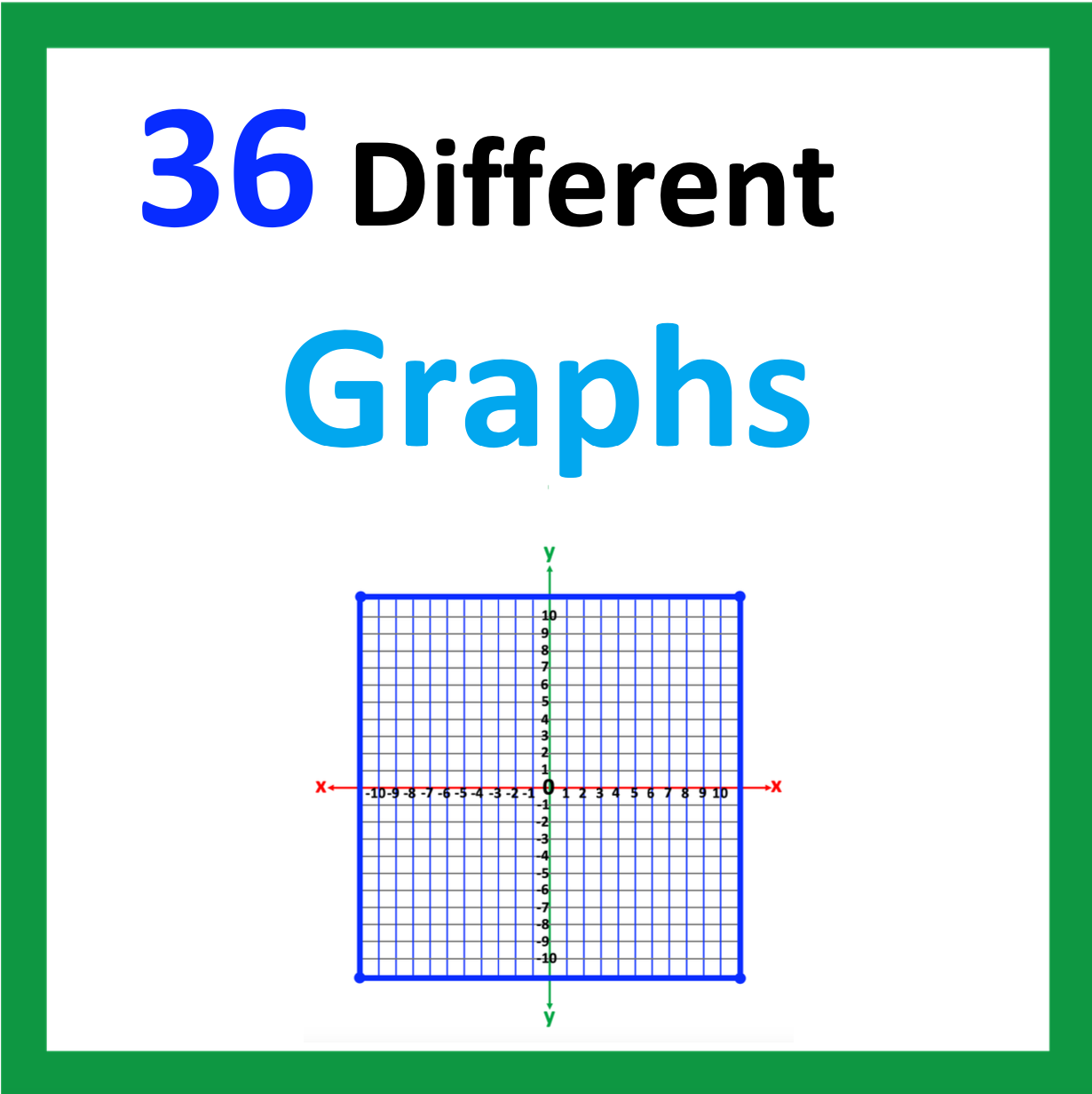
Looking for More Materials?
Click the button below to view more of my educational resources!
